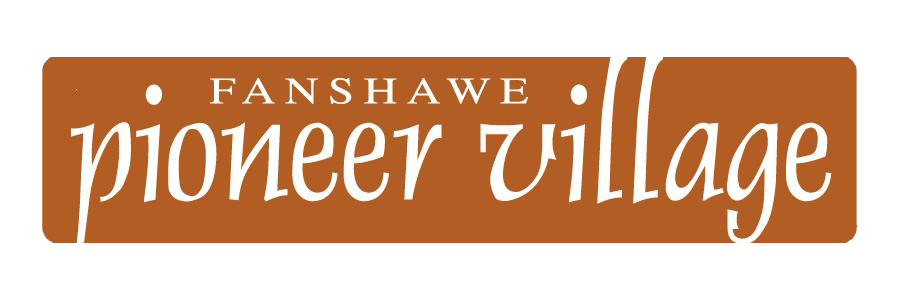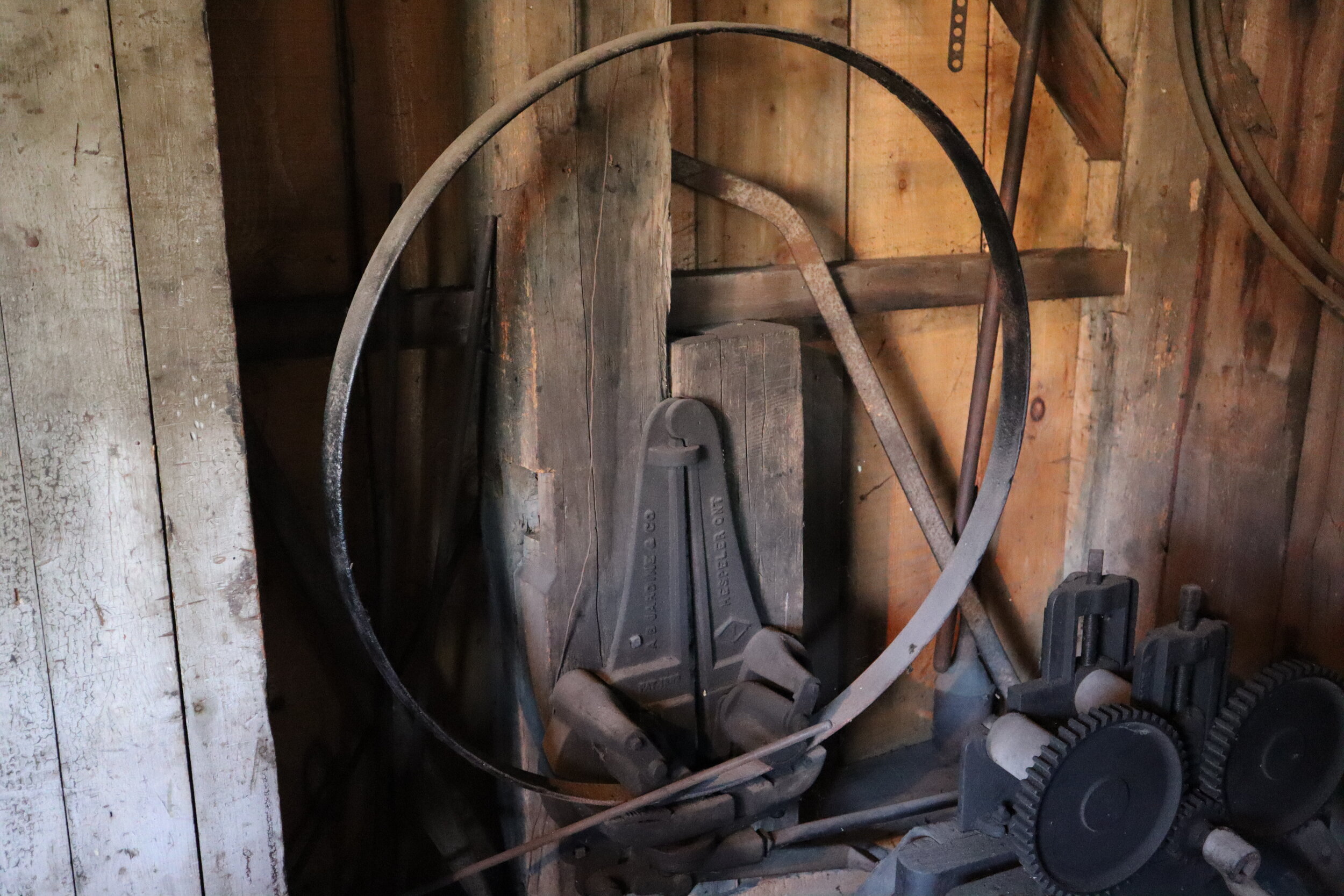Blacksmith Shop
Replica Building
Built 1959
Representative of an 1860s Shop
Entrepreneurs, like blacksmiths, chose transportation crossroads to establish off-farm businesses.
This replica shop was designed by Upper Thames River Conservation Authority Park Superintendent Rex H. Bishop, and constructed in 1958 by the Conservation Authority. The shop is named after local blacksmith William H. Weir (1853-1934) who apprenticed with Thompson’s Carriage Works in London before settling in West McGillivray Township. Weir’s horseshoes won many awards at local fairs and some are preserved in the Village’s artifact collection.
Blacksmith shops were some of the earliest businesses to appear in new communities. The smith played an important role in the community, making and repairing iron tools, farm equipment, wagon wheels, and household items. They often acted as the communities farrier, providing horseshoeing services. As a farrier they would require some basic veterinary knowledge.
Shops usually had large front doors to permit the entry of horses and wagons, and to provide better ventilation for smoke and heat. Instead of being made of wood, the floors were usually made of hard-packed earth. This reduced the risk of accidental fires from flying sparks. The building would have minimal windows as the darkness helped the blacksmith see the heated metal better.
Did you know that metal changes colour as it heats up? As iron or steel is heated, it turns a series of colours, which informs the blacksmith of the metal’s temperature and the amount of resistance it will have as it is bent into the desired shape. Metal that is slightly heated lightens to a brown tone, and as the temperature increases, the colour changes to red, followed by orange, yellow and white.
The Crossroads
As more people established themselves in an area, roads began to traverse the countryside, enabling crossroad communities to develop. These communities served the rural areas around them. Generally, the first buildings to appear in crossroad communities were a blacksmith shop and a tavern or inn. Other shops, trades, and community spaces would appear shortly afterward to meet the needs of the growing community.
Crossroad communities that had access to running water could harness the water’s power allowing other essential businesses like gristmills and sawmills to be established. This in turn led to continued development in an area.
Building restoration supported by Libro Financial Group and Special High Skills Major Program in Construction at Lucas Secondary School.
Blacksmithing Learning Resource
Discover more about Blacksmithing overtime in Ontario, by checking out ForgingON: The Evolution of Blacksmithing in Ontario.
Fanshawe Pioneer Village collaborated on this online Learning Resource with Pickering Museum Village and several other Ontario museums.










